The advantage of preparing a stock sous vide is that you are extracting the flavors in a sealed bag, so the aromas can’t go anywhere but into the stock. If you make a stock on the stove, all the aromas that you smell means that those aromas are no longer in the stock. Another advantage is that the stock will be more concentrated, because with sous vide you can use less water. For a delicate flavor like lobster it is worth taking the extra trouble to make the stock sous vide, but only if you are going to use the stock to make a broth. If you are going to cook it down on the stove to make lobster bisque, you might as well start preparing it on the stove as well.
I got the idea for lobster stock sous vide from Modernist Cuisine, and I’m mostly following their recipe here. They add a lot of additional ingredients that I think can be a regarded as optional: just lobster, onion, carrot, and celery suffice.
Ingredients

Makes about 750 ml (3 cups)
1 live lobster of 600 grams (1.3 lbs)
1/2 carrot, minced
1 shallot or small onion, minced
1/2 celery stick, minced
1 fennel top, minced
1 button mushroom, minced
3 leaves fresh basil
1 sprig fresh thyme
1 sprig fresh parsley
1/8 tsp fennel seed
small pinch of saffron
Instructions

Dispatch the lobster by plunging a chef’s knife into its skull. In this video I show how. Twist off the tail after killing the lobster.
If you place the cutting board in a large container of some kind, you can catch all the juices that will escape from the lobster to use in the stock.

Put 750 ml (3 cups) of water in a pot and bring to a boil. When the water boils, turn off the heat and place the lobster tail in the hot water. Allow to steep for 1 minute only, then transfer the lobster tail into cold water (preferably with ice cubes) to chill it. The lobster still should stay mostly raw; this step is only needed to be able to remove the shell. Reserve the cooking water.
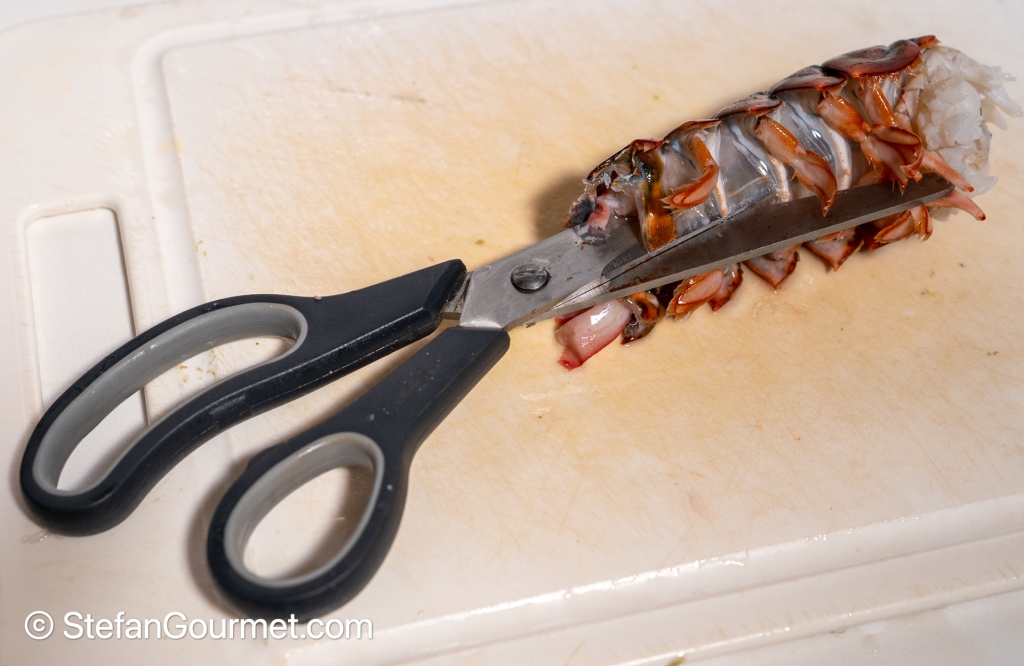
Use scissors or a chef’s knife…

…to get the lobster tail out of its shell.

Remove the intestine.

Refrigerate the lobster tail meat if you are not going to cook it straight away. You could cook it sous vide for half an hour at 46C/115F, 54C/129F or 60C/140F, depending on your preference.

Twist off the legs and claws of the lobster.

Bring the reserved cooking water of the tail back to a boil, add the legs and claws, and turn off the heat. Allow to steep for 6 minutes, then chill the legs and claws in cold water.

Make sure to remove the gills from the head of the lobster, as they make the stock taste bitter. The gills are the ‘feathery’ things.
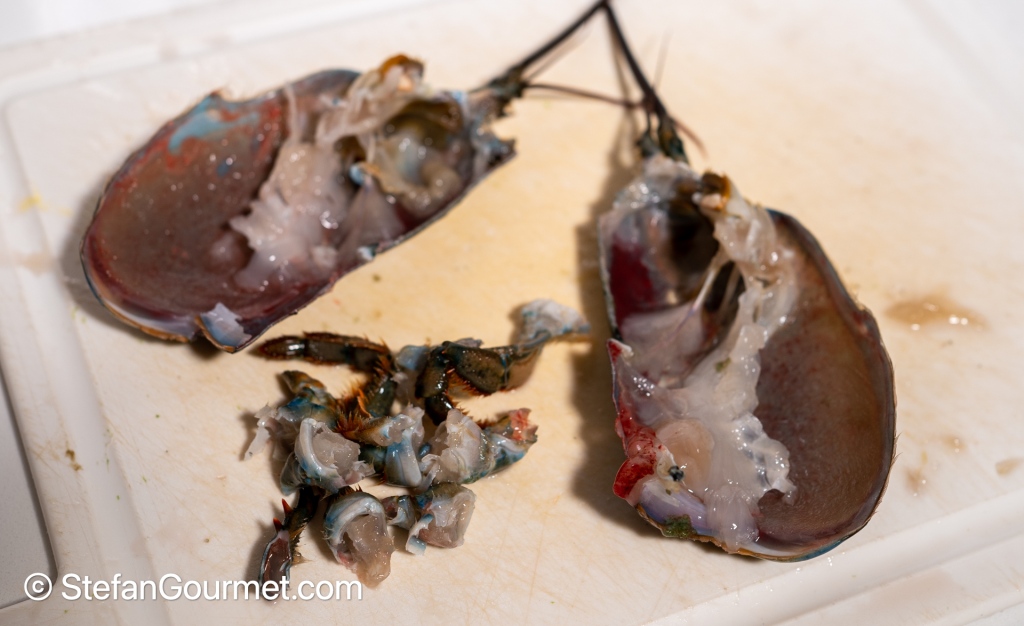
Remove all the other ‘nasty’ stuff from the head as well. It is up to you if you want to include the tomalley (liver) or get rid of it. That is the green slimy stuff.

Reserve the cooking water, as you will need it to make the stock. Allow it to cool.

Preheat the oven to 225C/440F. Take the cooked lobster meat out of the legs and claws (use a rolling pin for the legs), and reserve. Arrange the lobster shells in an oven dish in a single layer.

Roast the lobster shells in the oven at 225C/440F for 30 minutes.
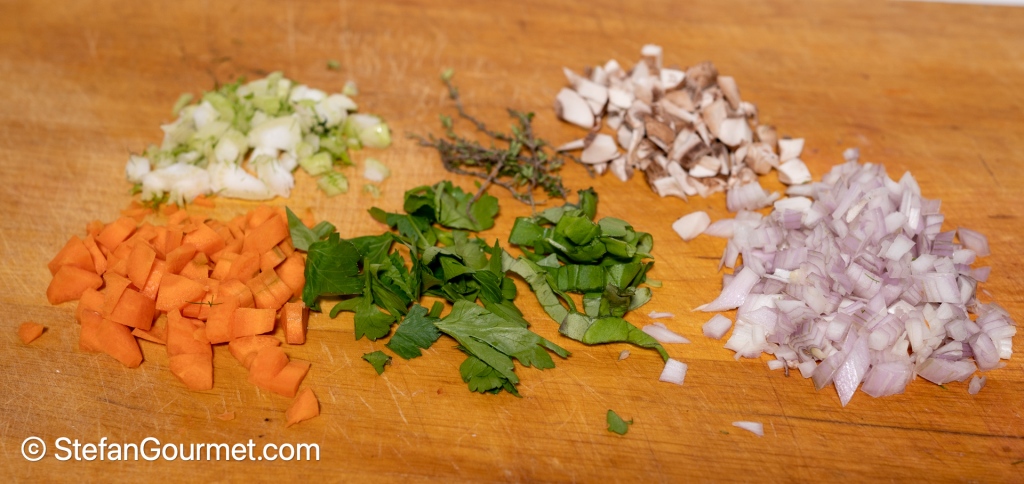
In the meantime, prepare the aromatics.

When the lobster shells have been roasted, transfer them to a food processor.
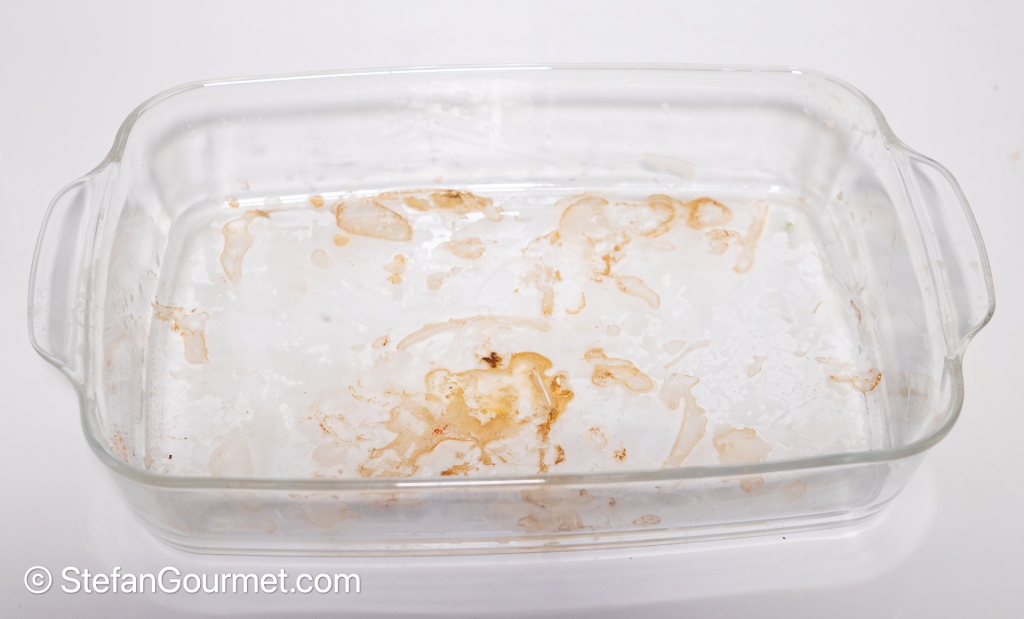
Reserve the oven dish with lobster drippings.

Grind the lobster shells in the food processor…
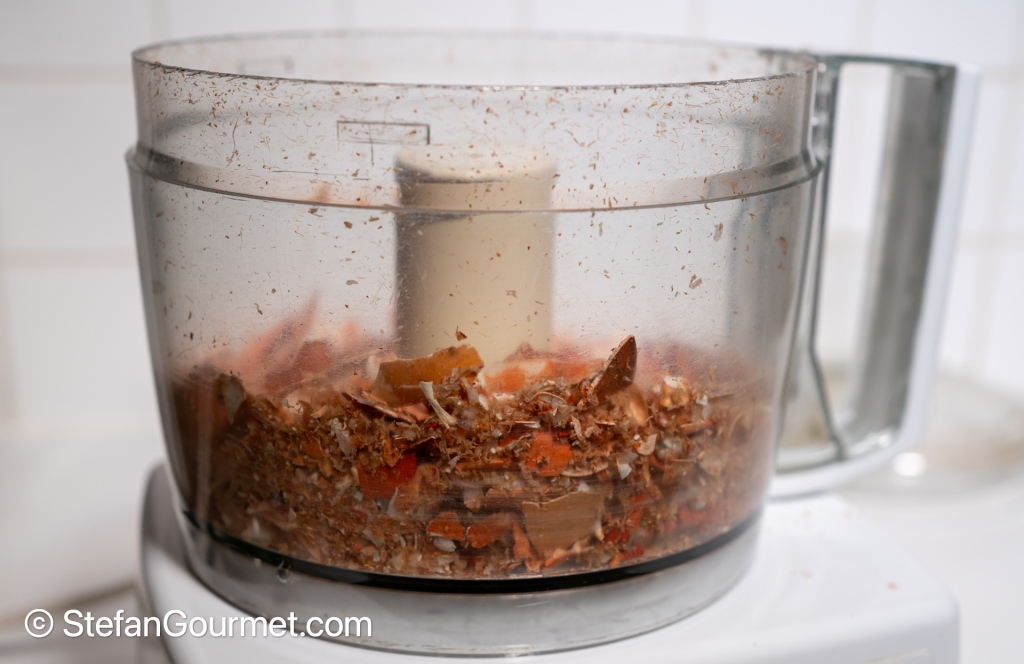
…until there are no more large pieces. Grinding the lobster shells serves two purposes: it enhances flavor extraction, and it prevents larger pieces of lobster shell from piercing the vacuum bag.
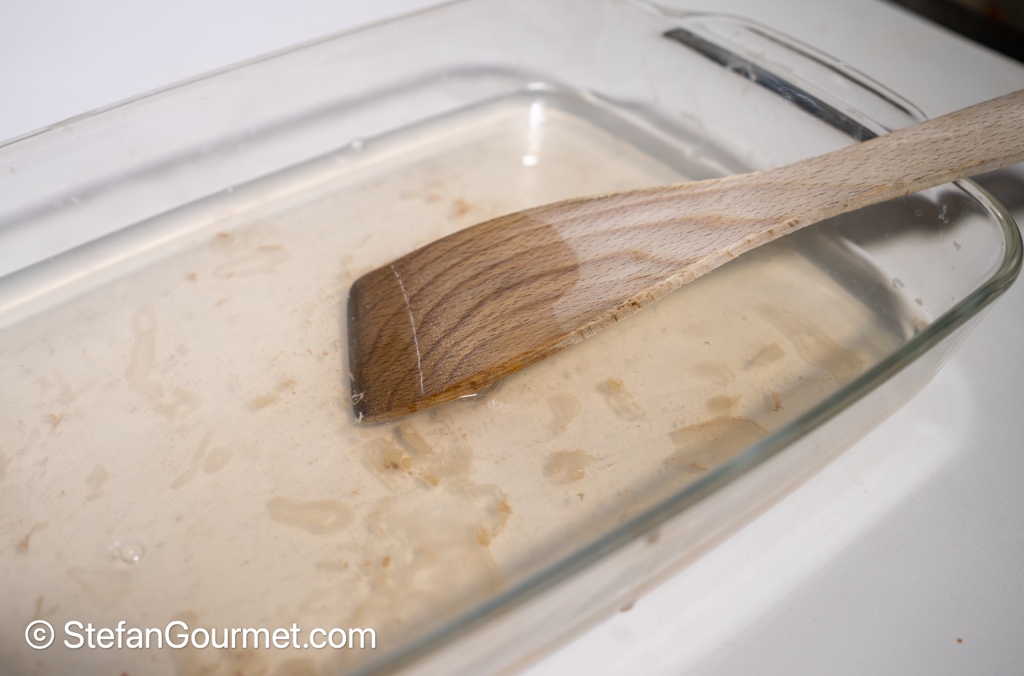
Add the reserved water from cooking the lobster to the oven dish, and use a wooden spatula to loosen the lobster drippings and include them in the stock.

If you have a chamber vacuum sealer, vacuum seal the lobster shells with the water and the aromatics. Otherwise, use a ziploc bag and the water displacement method.

Cook sous vide for 45 minutes at 88C/190F.
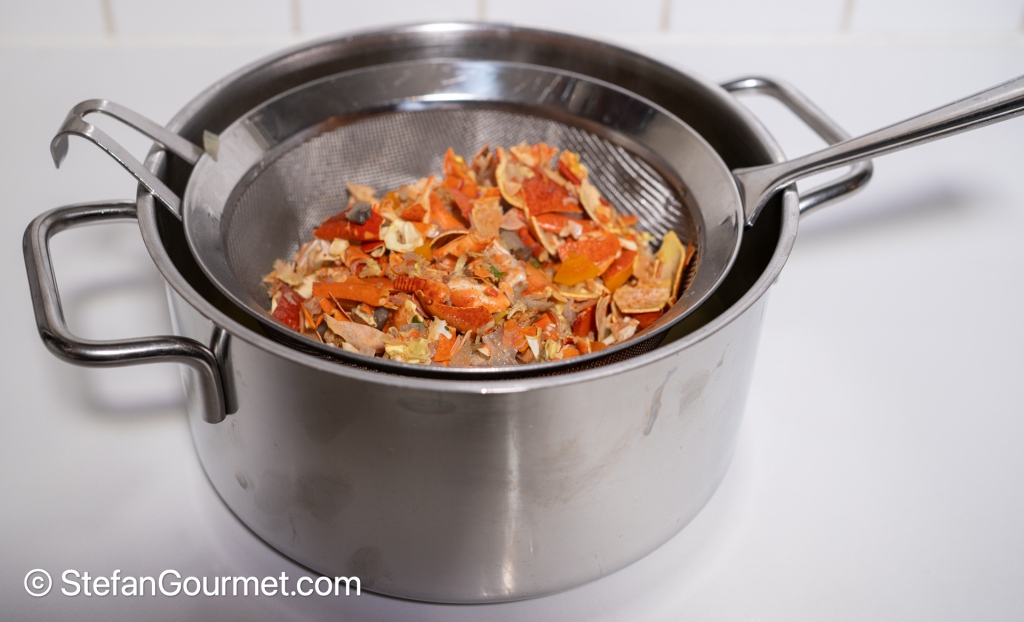
After cooking sous vide, strain the stock through a fine sieve.
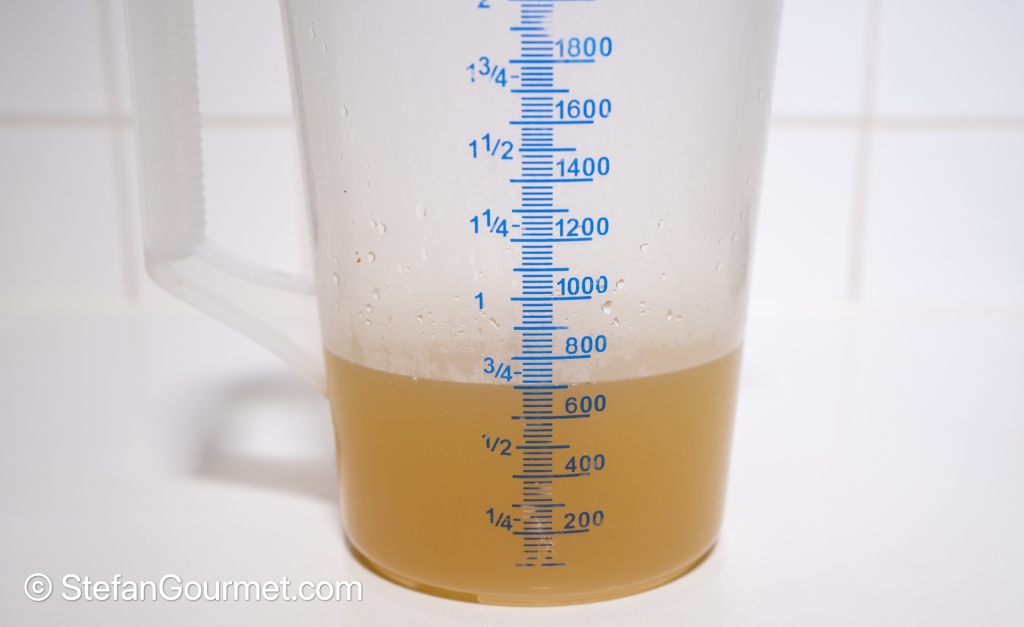
The lobster stock is now ready to be used to make a broth or soup. In my next post I will use it to make a delicious Portuguese dish.
Flashback

Octopus is called polpo in most of Italy, but polipo in Puglia. In Puglia octopus is often stewed in a local red wine from the grape variety Primitivo, which is known as Zinfandel in California. It is ten called Polipo in Primitivo. It is often served as antipasto, but can also be served as secondo piatto. The octopus works very well with the red wine. The flavors blend excellently and this dish has great depth of flavor. In Puglia octopus was often served with a chickpea or fava bean puree, and here I’ve served it with a white bean puree.
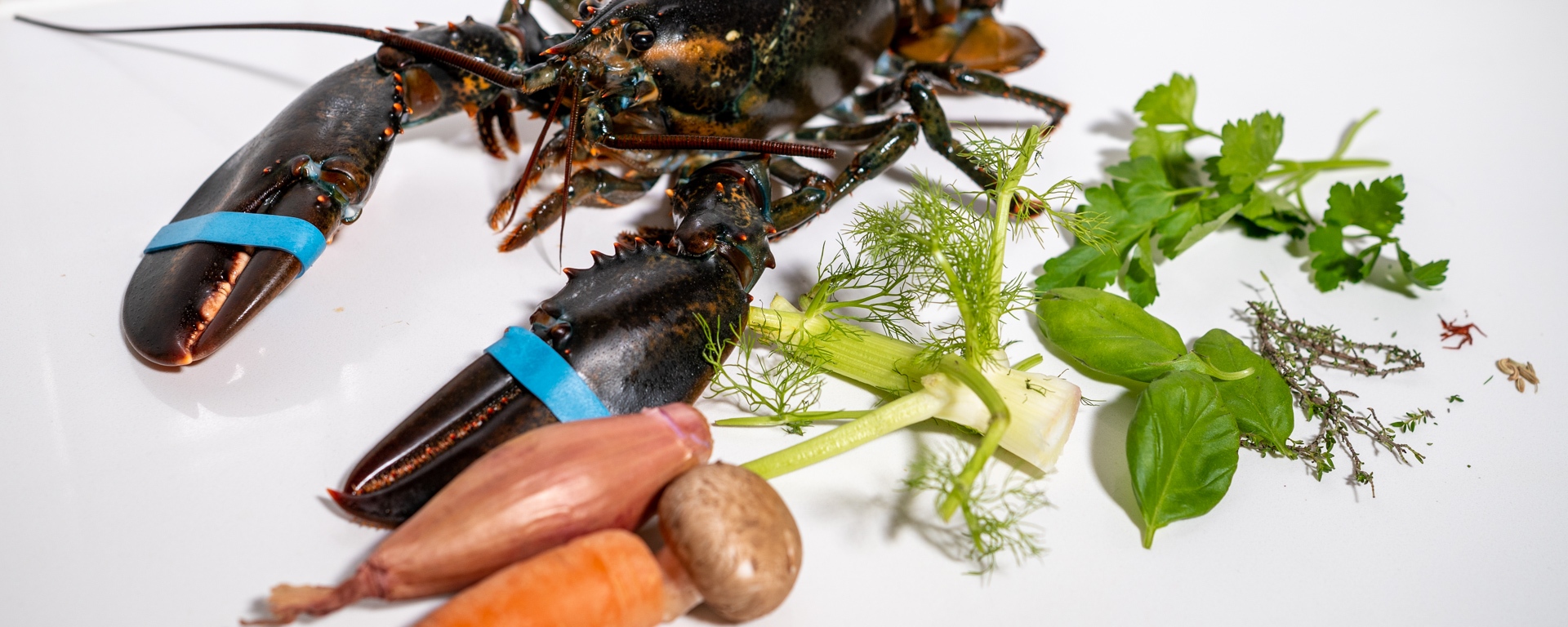

I wonder if this would work in my InstantPot? I’ve made shrimp stock using this method before: https://www.allrecipes.com/recipe/269281/instant-pot-shrimp-broth/
Sound yummy!
Bill
LikeLiked by 1 person
Hi Bill, the same recipe will certainly ‘work’ in the InstantPot. However, with sous vide you will keep more of the delicate aroma. The InstantPot version will still be very good though.
LikeLike
Wow, the lobster looks absolutely amazing. Would be very interesting to see whether the broth made sous vide is really better. Have you ever tried a side by side comparison? It is obviously more concentrated, since you need less water in a sous vide bag.
LikeLiked by 1 person
I haven’t tried a side by side comparison, because the aroma of the sous vide stock is so much stronger that I can predict the outcome.
LikeLike
Non riuscirò mai a cucinare un’aragosta … lo so, è un limite 🙂
LikeLike
Ma cucini le cozze, è la stessa cosa…
LikeLiked by 1 person
lo so lo so … ho i miei limiti
LikeLiked by 1 person
Thanks for such a wonderful and detailed recipe, Stefan! Thank you so much for sharing. I admit that killing the lobster is a bit tough for me, but I may try it once and see how it is. Pinned!
LikeLiked by 1 person